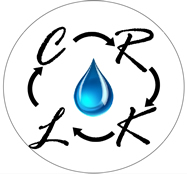Verde Valley Water Treatment
Project Details
Abstract:
A theoretical community in the Verde Valley has had their groundwater source contaminated with arsenic and nitrate at concentrations of 1-2 mg/L and 25-40 mg/L, respectively. This poses a serious health concern to the community because continued exposure to arsenic (As) over long periods of time has been correlated with cancer, specifically targeting the skin, bladder, and lungs. Non-carcinogenic health effects of arsenic cause birth complications. Additionally, when nitrate (NO3-) is ingested into the body it becomes nitrite, which is toxic. This toxicity mainly affects children 3 months old and younger because their developing immune system converts the entire ingested amount of nitrate to nitrite, whereas older humans only convert around 10%. One of the major health effects rising from ingesting nitrite is vascular collapse. Arsenic and nitrate can contaminate groundwater through natural processes and human activity. The main arsenic contributors are coal ash traces from coal burning and other industrial activities. Nitrate is brought into the water system through the nitrogen cycle, fertilizer runoff, wastewater disposal sites, landfills and other similar facilities. Our research determined that treating this water using ion exchange by activated alumina is best suited for this scenario. Activated alumina is commonly used to treat arsenic and nitrate separately, however our research indicated that we can use activated alumina as a dual treatment media. The contaminant concentrations will need to be lowered to the community and EPA approved regulations of 0.01 mg/L of arsenic and 10 mg/L of nitrate to consider this treatment and project a success.

